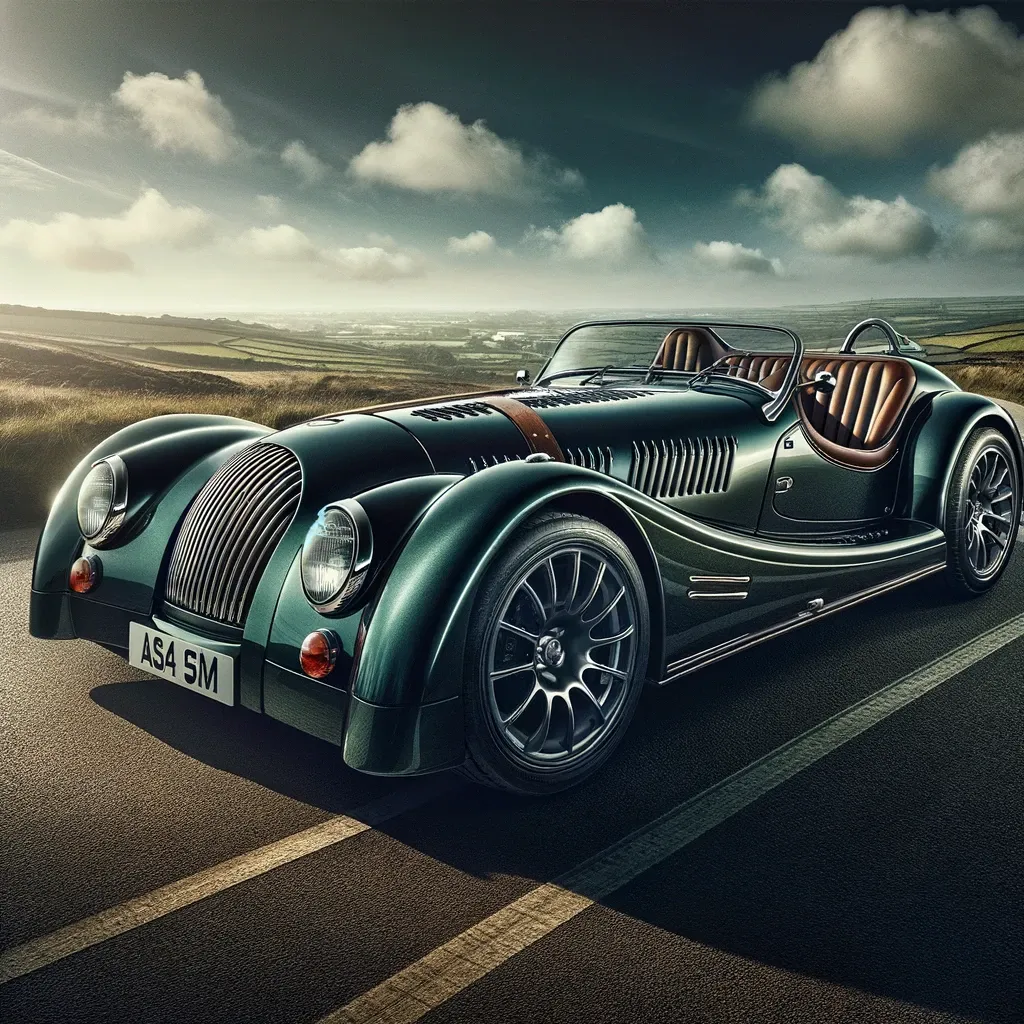Tour of the Morgan Motor Company factory in Worcestershire

For over a hundred years, the Morgan Motor Company has been located in Malvern Link, Worcestershire, at the foot of the steep hills of the same name. It was on these hills that the company's founder, Henry Frederick Stanley Morgan, tested his first cars. These were lightweight and efficient three-wheeled vehicles with inherently sporty qualities, although many pre-war cars were accessible to everyone, not just exclusively sporty.
The first Morgan 4/4 (four wheels and a four-cylinder engine) was released in 1939, and then, in 1952, an improved model called Plus Four was introduced. The iconic Plus Four model was launched in 1950 and gradually evolved into its familiar and enduring shape by the early 1960s. Over more than 70 years, with experiments on models like the Plus Eight (with a V8 engine) and various variations, it is this car that continues to define Morgan in contemporary perception.
Every aspect of producing each car is done by hand and is unique. Currently, many old brick workshops of the company still exist, and the floors in them are uneven from activity. Some machines look distinctly ancient, with old presses, stampers, and molds next to more modern equipment for car manufacturing.
Plus Six model
We are here to test the Plus Six model, Morgan's flagship model, which is positioned alongside the "entry-level" Plus Four and the Morgan Super 3, an extremely open motorcycle classified as a motorcycle in the American market. After an adrenaline-filled ride in the rain on the latest model, it’s time to step into the dry cabin of the Plus Six, which features leather upholstery. This model is named for its six-cylinder turbo engine provided by BMW, which lies at its heart. The Plus Six impresses with a combination of two key qualities of any sports car: lightness and power.
With rear-wheel drive and a weight of just 1075 kg, the Plus Six can fully utilize its 335 hp. Excellent handling and a direct steering system help keep the car on track without too much trouble. Although it is slightly longer and wider than its less powerful counterpart, the Plus Four (to accommodate a larger engine), the Plus Six still only seats two people, with space behind the front seats for luggage and a roof rack for additional storage.
While the Plus Six isn't perfect for long trips, as extended stretches on the highway can become a bit tiring, it excels at making any journey special, especially with its retractable lightweight hood and no specific deadline to meet.
The future of the Morgan company
The client base of Morgan is truly diverse and eccentric, including people who are willing to wait three to six months for a car, valuing the experience of visiting the factory and seeing the hammer spark against the metal.
5 May 2025
1 May 2025
Unlike this, the Super 3, for the first time in the company's history, does not use wood, but even here there is an inseparable connection between design and engineering solutions. "Every detail serves multiple functions, which contributes to the aesthetics," says Wells, pointing to the cast aluminum brackets that hold the Super 3's headlights and also serve as a rigid engine frame. Inside, there is waterproof switchgear, side panels for storing removable luggage racks, which can hold everything from a GoPro camera to a suitcase.
Changes are happening at Morgan, albeit slowly. Wells is the longest-serving chief designer at the company, and she has the funding and ambition to achieve something a bit different. For decades, Morgan has been designing cars for a specific audience that values individuality above all else.
Electrification is certainly a huge challenge for a small manufacturer like Morgan, as well as the safety requirements of major markets like the US, and the growing demand for ADAS (Advanced Driver Assistance Systems) in new cars. The latter requires investments. Of course, there are loopholes, but ultimately, a modern car filled with sensors, equipped with lane-keeping support, emergency braking systems, and similar features, seems to completely contradict the true essence of Morgan.
For Wells and his team, who are currently at the facility not far from the main factory, these incidental tasks are not just challenges but also opportunities. We are shown pages and pages of sketches indicating what the future holds, all of which is still kept under wraps, as well as an exclusive preview of the upcoming collaboration that promotes the aesthetics and status of Morgan within the broader design community.
The British automotive industry was once teeming with small manufacturers like Morgan, who catered to specific market segments and provided jobs, skills, and benefits to the surrounding communities. Modern economic and efficiency demands no longer allow cars to be made in this way, so Morgan's survival is something to be valued. The good news is that everything that made the company so unique in the past will help it progress and thrive successfully in the future.
Comment
Popular Posts
Popular Offers

Subscribe to the newsletter from Hatamatata.com!
Subscribe to the newsletter from Hatamatata.com!
I agree to the processing of personal data and confidentiality rules of Hatamatata














